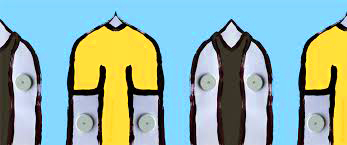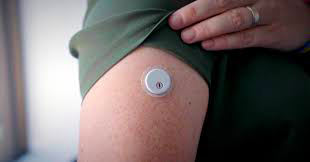Libre 3 Sensor Error Signal Loss
Living with diabetes may be a steady balancing act of managing blood sugar tiers. For many individuals, the Freestyle Libre has three glucose-tracking devices. It turned out to be a recreation-changer. supplying non-stop glucose monitoring (CGM) without the want for finger pricks. But even the most superior technology encounters hiccups. The Libre 3 Sensor Error is not an exception. Understanding sensor error and signal loss is essential for Libre 3 customers. It is a step to ensure accurate glucose readings are optimal for diabetes management.

Introduction
Overview of the Libre 3 Sensor Error in glucose monitoring
The Libre Three Sensor Error is a small, waterproof device worn on the top arm. It measures interstitial fluid glucose levels every 15 minutes. Transmits the facts to a like-minded reader or telephone app. This continuous flow of glucose statistics empowers people. Especially with diabetes, to make informed selections about their insulin use. The eating regimen and way of life pick.
The significance of accurate sensor readings for individuals with diabetes
Accurate glucose readings are essential for robust diabetes control. They provide actual-time insights into blood sugar fluctuations. Supports individuals avoid hyperglycemia (high blood sugar) and hypoglycemia (low blood sugar). Consistent and dependable statistics from the Libre Three Sensor Error can:
• Improve glycemic management and HbA1c stages
• Reduce the danger of diabetes-associated headaches
• Enhance insulin dosing accuracy
• Increase self-assurance and self-management talents
Exploring the Landscape of Sensor Error and Signal Loss
Despite its benefits, the Libre Three Sensor Error isn’t proof against errors. Also, it is not against the signal loss. These system defects can disrupt the glide of glucose statistics. They create uncertainty for customers. Let’s delve into the various types of sensor errors and signal loss situations:

Sensor Error Codes:
The Libre 3 gadget displays unique mistake codes to suggest sensor malfunction. Some not-unusual ones consist of:
• Sensor Error 1: Faulty sensor initialization
• Sensor Error three: Sensor conversation trouble
• Sensor Error 14: Sensor adhesive failure
• Sensor Error 15: Expired sensor
Understanding the meaning of these error codes empowers users to make suitable movements. They consist of replacing the sensor or searching for technical support.
Signal Loss Scenarios:
Besides error codes, several factors can contribute to sign loss:
· Sensor placement:
Improper placement on the top arm or interference from clothing. Scientific gadgets can weaken the sign.
· Sensor lifespan:
Sensors have a predetermined lifespan (14 days). Signal strength can also diminish towards the stop.
· Technical issues: Reader or app malfunctions can disrupt the sensor’s communication.
Impact of Error and Signal Loss:
Sensor errors and sign loss could have many consequences:
· Inaccurate glucose readings:
Misleading records can result in wrong insulin dosing decisions, causing hyperglycemia or hypoglycemia.
· Data gaps:
Missing glucose information hinders the capacity to tune tendencies and patterns. Makes it hard to manipulate diabetes.
· User frustration and anxiety:
Technical system defects can be irritating. This adds to the already current challenges of dealing with diabetes.
Strategies for Minimizing Error and Signal Loss
Now that we have explored the challenges, we’ve equipped ourselves with techniques. This is a step to limit their incidence:
Sensor Application and Care:
• Choose the perfect sensor placement website at the top arm. Warding off areas with scars, moles, or lively implants.
• Apply the sensor and observe the producer’s commands for the correct software.
• Avoid sporting tight garb or accessories over the sensor. It could intrude with the sign.
• Replace the sensor after 14 days to ensure optimal performance.
Troubleshooting Technical Issues:
• Restart the reader or cellphone app if experiencing verbal exchange troubles.
• Ensure compatibility between the sensor and the reader/app.
• Update the reader/app software program to the modern version.
• Seek technical support from the producer if troubleshooting fails.
Managing Data Gaps:
• Use finger prick tests as a backup degree to fill in record gaps.
• Consult with your healthcare provider to interpret missing statistics. Alter insulin doses if essential.
• Maintain a high-quality mindset, and don’t forget that occasional glitches are inevitable. Focus on the benefits of CGM.
Extra Resources:
Online communities and boards for Libre Three users can provide beneficial pointers. Help from others facing similar demanding situations.
By informing the character of sensor errors and sign loss, Adopting preventive measures, and employing powerful troubleshooting techniques. People with diabetes can navigate those demanding situations. Get the full advantages of the Libre 3 CGM system.
The Role of Libre 3 Sensor Error in Glucose Monitoring
The Freestyle Libre three Sensor Error stands. A revolutionary tool inside the realm of diabetes control. Its capability to screen glucose tiers without the need for finger pricks. This has empowered infinite people to manipulate their fitness. But how does it work, and how does it combine into daily workouts? Let’s delve deeper into these essential components.
Understanding how the sensor measures glucose levels
Unlike conventional glucometers that measure blood sugar without delay. The Libre Three Sensor Error specializes in interstitial fluid. This fluid surrounds our cells and includes glucose that diffuses from the bloodstream. The sensor utilizes a biocompatible filament inserted beneath the pores and skin. This filament is coated with a glucose oxidase enzyme. It reacts with glucose in the interstitial fluid, generating an electrical contemporary. The electricity of this present day is proportional to glucose awareness. Supplying a continuous circulation of facts approximately blood sugar degrees.
The sensor transmits this data in 15 minutes to a well-matched reader or smartphone app. These readings are then displayed as glucose degrees on an interface. Empowers individuals to:
• Track traits and styles:
Observe how glucose levels fluctuate for the day. Figures out elements that impact them.
• Make knowledgeable decisions:
Adjust insulin doses, food plan, and workout based on actual-time glucose records.
• Prevent hypoglycemia and hyperglycemia: Act to avoid dangerous blood sugar fluctuations.
Integration of Libre 3 into diabetes management routines
The Libre Three Sensor Error integrates into day-by-day exercises, offering convenience and flexibility:
• Simple utility:
The sensor is implemented with a painless applicator to return the upper arm. It’s small, discreet, and water-resistant. When Taking into consideration showering and swimming without worry.
• Continuous tracking: No greater finger pricks! The sensor affords 24/7 glucose records, even while sleeping or working out.
• Alarm gadget:
Customizable alarms alert users while glucose levels reach pre-set highs or lows. Selling proactive control.
• Data sharing:
Glucose records may shared with healthcare companies for better collaboration.
Here’s how the Libre 3 can suit into a standard day:
• Morning: Apply a new sensor if wanted. Scan the sensor to get a baseline glucose reading earlier than breakfast.
• Throughout the day: Scan the sensor, particularly before meals, workout, and bedtime. Adjust insulin doses or medicine based on glucose developments.
The Libre 3 Sensor Error isn’t always a device but a companion in diabetes management. Its capability to integrate into day-by-day routines. Coupled with its advanced generation and features. Empower people to manage their fitness and stay lifestyles to the fullest.
Knowing how the Libre Three Sensor Error works and how it may be incorporated into each day’s workouts. People with diabetes can unlock its complete ability. Enjoy a newfound sense of freedom. Control in coping with their condition.
Types of Sensor Errors and Signal Loss: Understanding the Glitches in the System
The Freestyle Libre three Sensor Error, though a wonder of the contemporary era. It is not proof against occasional hiccups. These system defects can come from sensor mistakes and signal loss. Disrupting the glide of essential glucose data and impacting diabetes management. Let’s delve deeper into those demanding situations. Equip ourselves with the understanding to navigate them.
Explanation of common sensor errors:
The Libre 3 machine displays particular error codes to communicate sensor malfunction. Understanding their meaning empowers customers to take suitable action:
• Sensor Error 1:
Faulty initialization: This indicates hassle throughout sensor software or activation. Try rescanning the sensor or replacing it.
• Sensor Error three:
Communication problem: The sensor and reader are not communicating. Ensure like-minded gadgets and software program updates.
• Sensor Error 14: Adhesive failure – The sensor may be detaching. Check for correct placement and keep in mind the usage of more adhesive patches.
• Sensor Error 15: Expired sensor – Sensors have a 14-day lifespan. Replace the sensor immediately.
• Other blunder codes:
Consult the manufacturer’s manual for extra codes and recommended moves.
Impact of signal loss on continuous glucose monitoring:
Signal loss can arise due to various factors. Create gaps within the glucose facts circulate and impact diabetes management:
• Misleading decisions:
Insulin dosing modifications or dietary picks can based on many facts. It is without real-time data,
• Data gaps:
Missing glucose tendencies and styles can hinder information, especially on how blood sugar responds to various factors.
• Increased anxiety:
Technical glitches can add pressure. Also, uncertainty in the already demanding venture of coping with diabetes.
Strategies for minimizing sign loss:
• Optimal sensor placement:
Choose the particular area on the upper arm, fending off scars, moles, or implanted gadgets.
• Proper software: Follow the manufacturer’s commands for secure and stable sensor attachment.
Conclusion: Embracing the Journey with Libre 3
The Freestyle Libre three Sensor Error represents a modern leap in diabetes control. Empowering people to take control of their health with non-stop glucose monitoring. Yet, like several technologies, the Libre Three isn’t without its demanding situations. Understanding the capability for sensor errors and signal loss.
Remember, the adventure with Libre 3 isn’t always pretty much era. It is about empowerment and proactive care. Foster open communication together with your healthcare issuer. Doing so can you redesign the Libre Three from a trifling device into a powerful accomplice.
